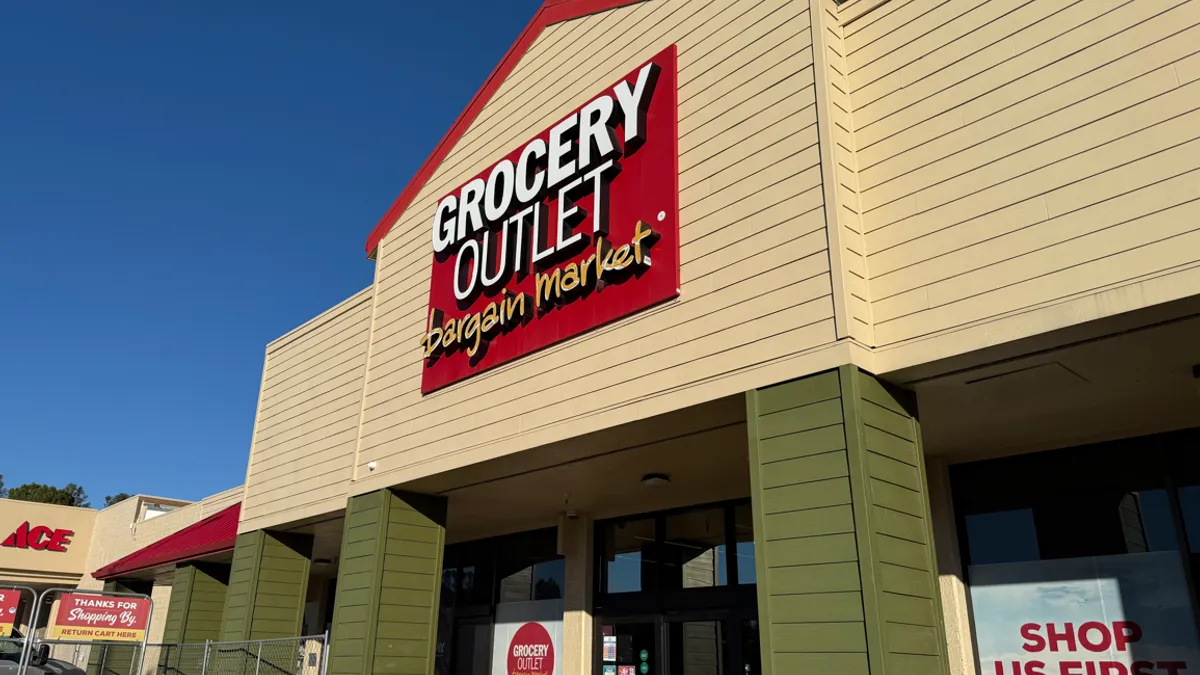Dive Brief:
- BJ’s Wholesale Club recorded a 5.7% year-over-year increase in comparable-store sales excluding gasoline during the first quarter of fiscal 2023, with grocery sales playing a key role in driving the retailer’s results, executives said Tuesday during an earnings call.
- Net sales were up 5% during Q1 year over year, to $4.6 billion, and operating income was up 24.3%, to $186.8 million.
- BJ’s saw its financial results lose energy during Q1 compared with the previous quarter as inflation, while still elevated, continues to slow.
Dive Insight:
BJ’s has thrived as it has drawn shoppers seeking refuge from high prices, but while the membership retailer turned in another strong quarter, it is now facing growing headwinds as inflation and other factors that have played to its strengths lose potency.
Same-store sales growth was 3 percentage points lower in Q1 than the level the company posted during the fourth quarter of last year, and CFO Laura Felice predicted during the earnings call that the metric would moderate but be “relatively balanced” as 2023 unfolds.
Felice said BJ’s recorded a comparable-store increase of about 8% in its grocery, perishables and sundries division during Q1, a figure that was down from approximately 12% in Q4. Net sales growth slowed to 5% during Q1 from 13.2% during the prior quarter, while digitally enabled sales also lost momentum.
Meanwhile, President and CEO Bob Eddy noted during the earnings call that while BJ’s gross margins were “outstanding” during Q1, which ended April 29, they are likely to go down as 2023 progresses and benefits like declining distribution costs become less impactful.
“I would say, as we get through the rest of the year, those tailwinds just lessen. And so we do expect this to be our highest quarter of the year from a gross margin perspective,” Eddy said.
Eddy said inflation is coming down “a little faster” than BJ’s had expected, adding that BJ’s has recently seen prices decline for some types of food, like eggs, chicken and dairy products.
BJ’s saw robust private label sales growth in its sundries and grocery divisions during Q1, boosting its own brand penetration by about 1 percentage point year over year and pushing the retailer closer to its target of 30% penetration, Eddy said. “Members who engage in our own brands spend more, visit us more often and are therefore better members,” he said.
Felice said it has not changed its outlook for all of 2023, which calls for comparable-store sales growth to fall between 4% and 5% year over year.
“Our commitment to bringing unbeatable value to our members remains a powerful advantage in times like these. As a result, we believe we are well positioned to continue growing our top line and gain market share, anchored by strength in our grocery businesses,” said Eddy.
BJ’s share price tumbled more than 7% on Tuesday after the company released its results, closing the day at $64.55 on the New York Stock Exchange. The price represented a more than 17% drop from BJ’s 2023 peak of $78.07, which it reached on April 24.










